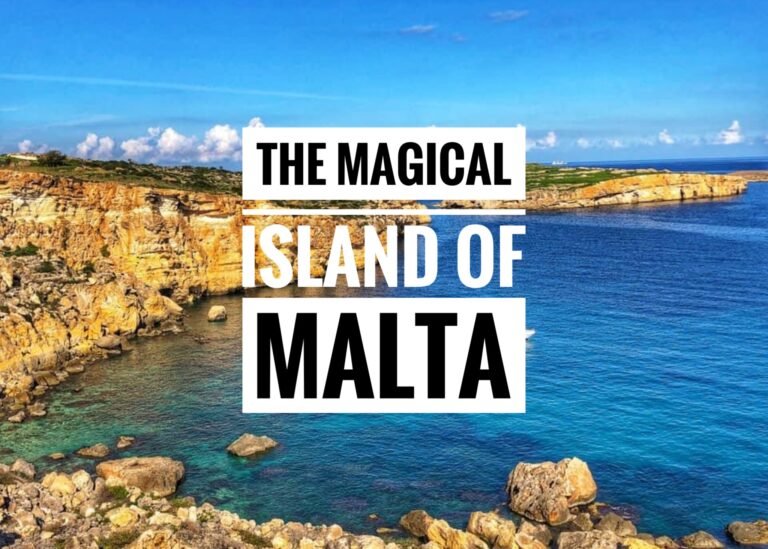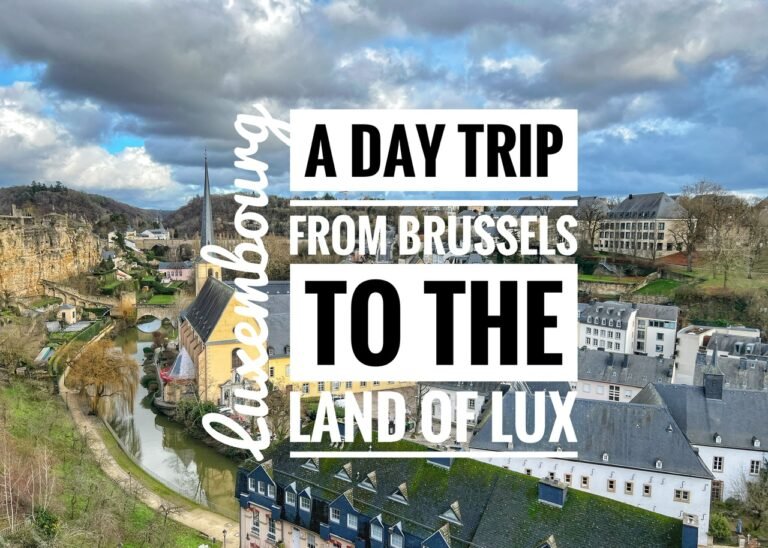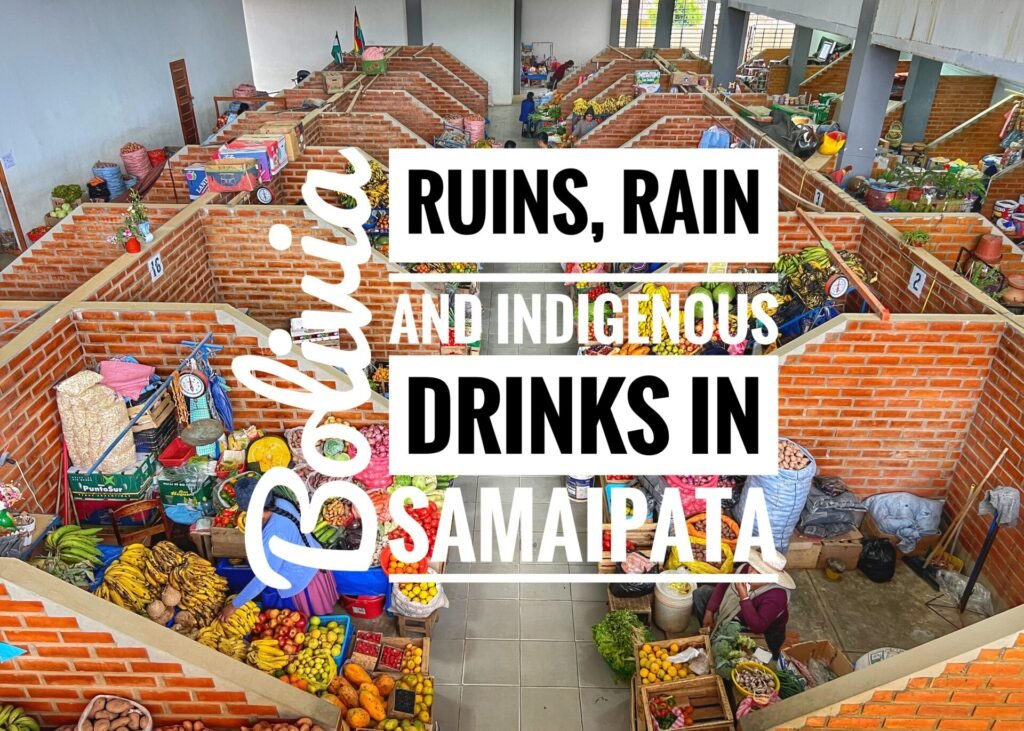
From Santa Cruz, we would jump on a three-hour shared mini bus amusingly called a Trufi here to our next destination of Samaipata, which would offer us the more rural and slower pace of life we’ve been craving after one too many recent cities. Although most tourists stick to the Salar de Uyuni and La Paz regions of Bolivia, there are many reasons to head east. Samaipata is tiny village of 4,000 which seems firmly engrained on the backpacker trail and even home to many expats, mostly Germans. It is ringed with Andean foothills and many of the streets in the village of 4,000 are lined with dirt which made the storms we would soon receive create a muddy rivered mess.
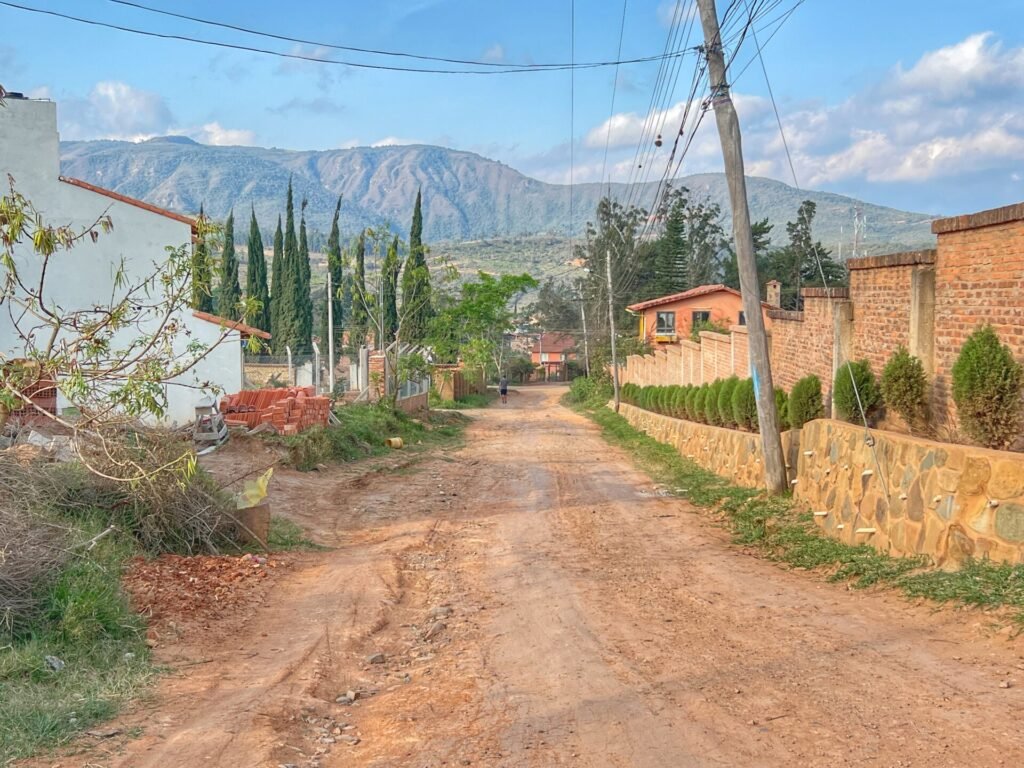
But the day we arrived, it was totally beautiful and tranquil.

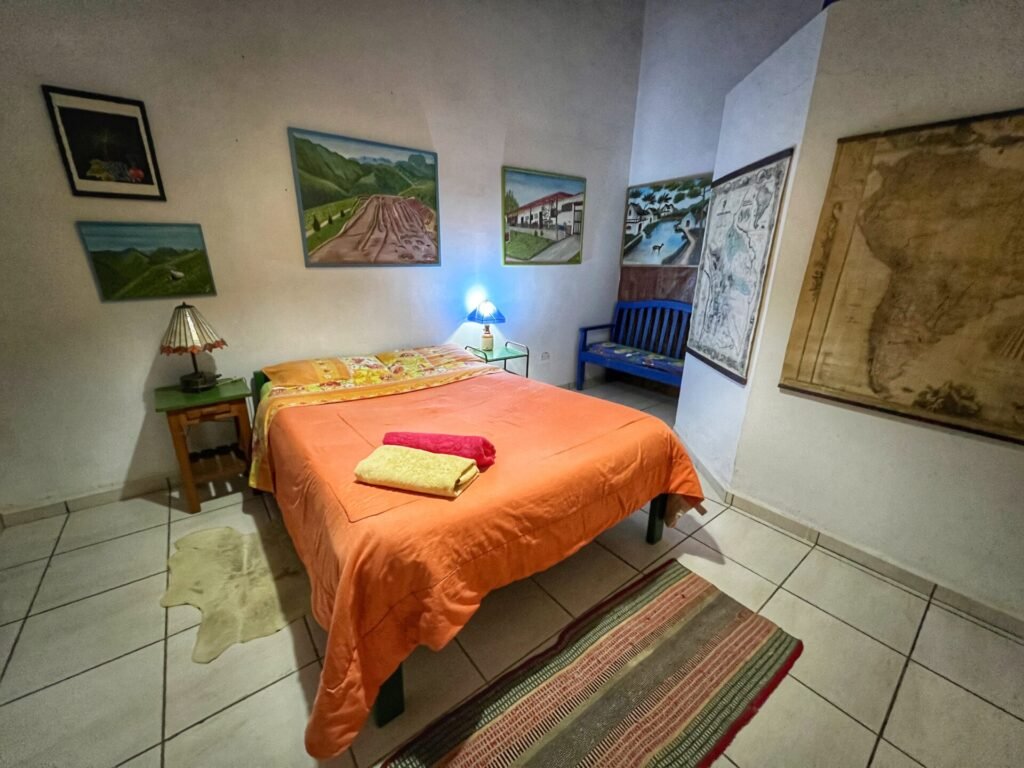
Our trufi driver, Willy, kindly dropped us off right where we needed to be and saved us a 10-minute slog from the town square. Welcome to our home for three nights, Los Adventureros Hostel. We were greeted by Tonia, our host, who spoke surprisingly understandable Spanish. It was easy to love the slower pace which they speak in Bolivia. Our room may have offered the pancakiest pillows we’ve had in five years of travel. Thankfully our inflatable travel Fillos came to the rescue!! Seriously, one of the most valuable pieces of travel kit we own.
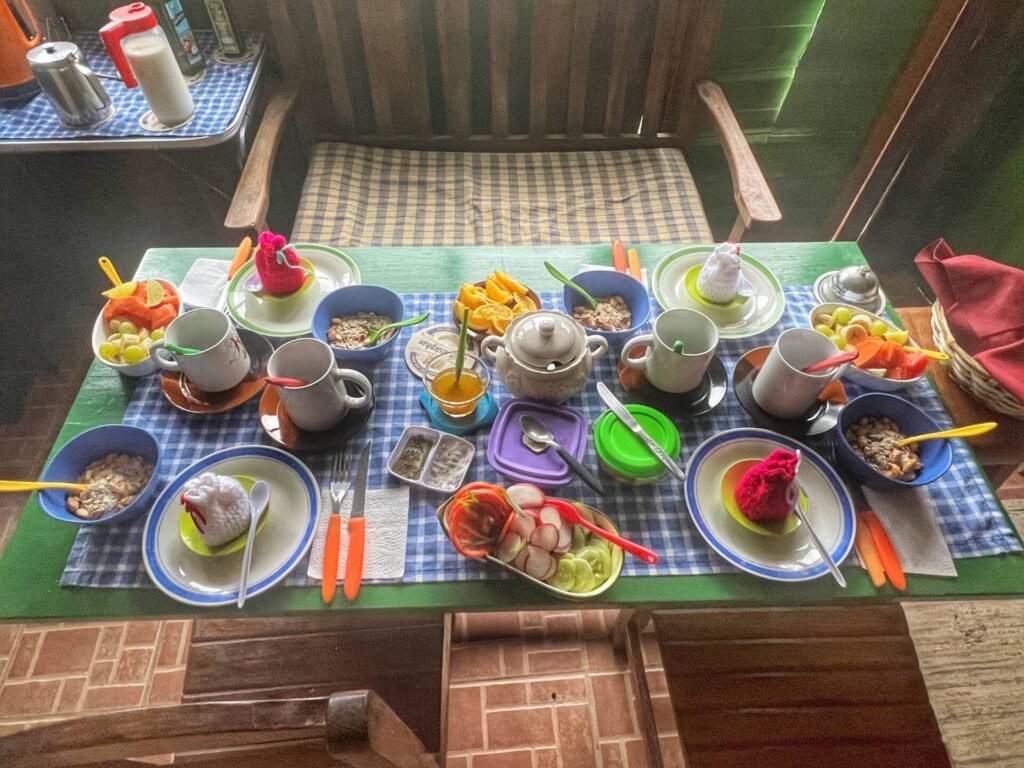
The cost was $18 for our own room and bath, as well as a very full breakfast in the morning including boiled eggs, fruits, breads, musli, veggies and coffee/tea.

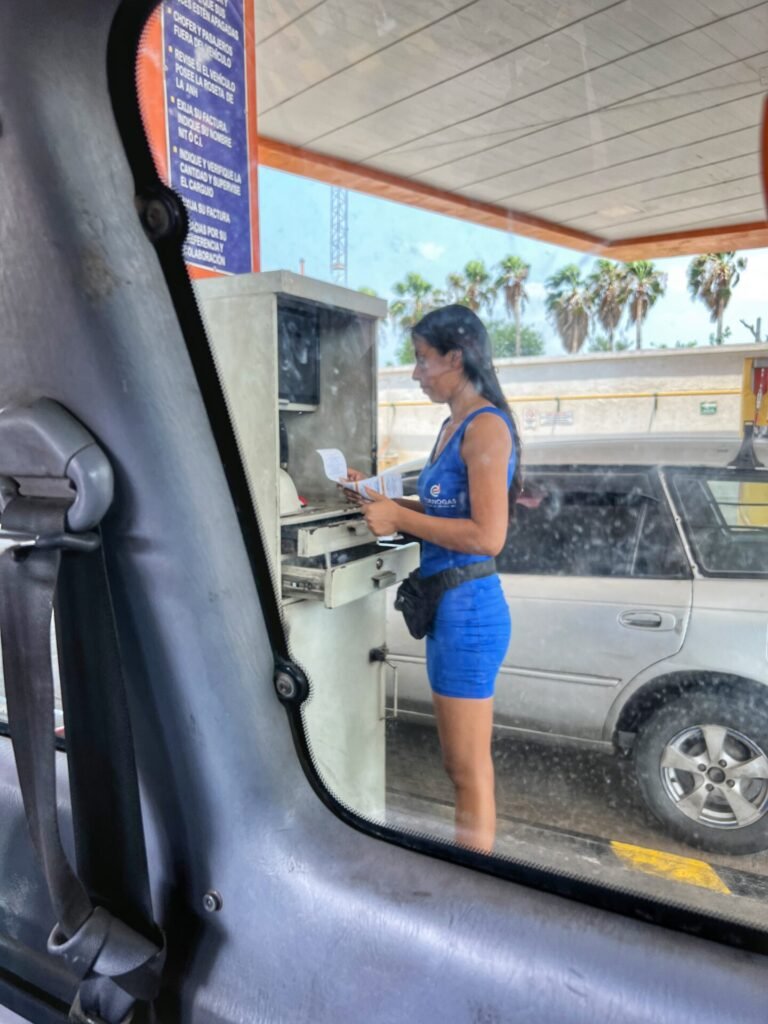
Rewinding a bit, Greg brilliantly thought to take a picture inside our trufi, which we shared with a local family. This would come back to help us later. To catch this Trufi in Santa Cruz, we plugged in “Stefany Moda” Dress shop to Uber to take us near the Trufi depot in Samaipata on the Segundo Anillo. The cost was about $4/ticket.
On the way to Sampaita, we stopped at a petrol station called TornoGas. So what, right? Well, TurnoGas is evidently the Hooter’s of Bolivian Petrol stations and all the (gorgeous) attendants whip around your vehicle filling the tank, checking the oil and cleaning your windows in very skimpy (and practical) blue dresses.


Locals selling goodies through the van window. It usually consisted of peanuts, plantain chips, oranges and Pasancalla, a puffed corn snack. Going into Bolivia, we definitely felt we had arrived back in Latin America. It feels so bizarre after our time in developed Buenos Aires and Brazil.

After our driver dropped us off at our hostal, Mandy was super bummed to realize a couple hours later that she had left behind her Hydroflask water bottle which has been by her side throughout our entire travels. We assumed it was long gone, but went into the office just in case someone had turned it in. They hadn’t…but fortunately, because of the photo Greg took, from the side mirror, they were able to identify the driver as “Willy” and call him. He arrived, looking pretty grumpy as if we’d woken him up, but with the water bottle in his hand. We were so grateful! It’s amazing how precious our few possessions are!
Exploring Samaipata

Samaipata is mostly cobbled or dirt and surrounded by Andean foothills. It’s small. You can walk across its entirety in about 15 minutes. It has numerous tourist attractions including hiking, ruins and an animal refuge. Although the weather is known to be perfect, it definitely wasn’t for us and we were disappointed to lose an entire day and a half due to thunderstorms. Despite this, we had a wonderful time enjoying the quaint village, the people, the markets and the laidback lifestyle.
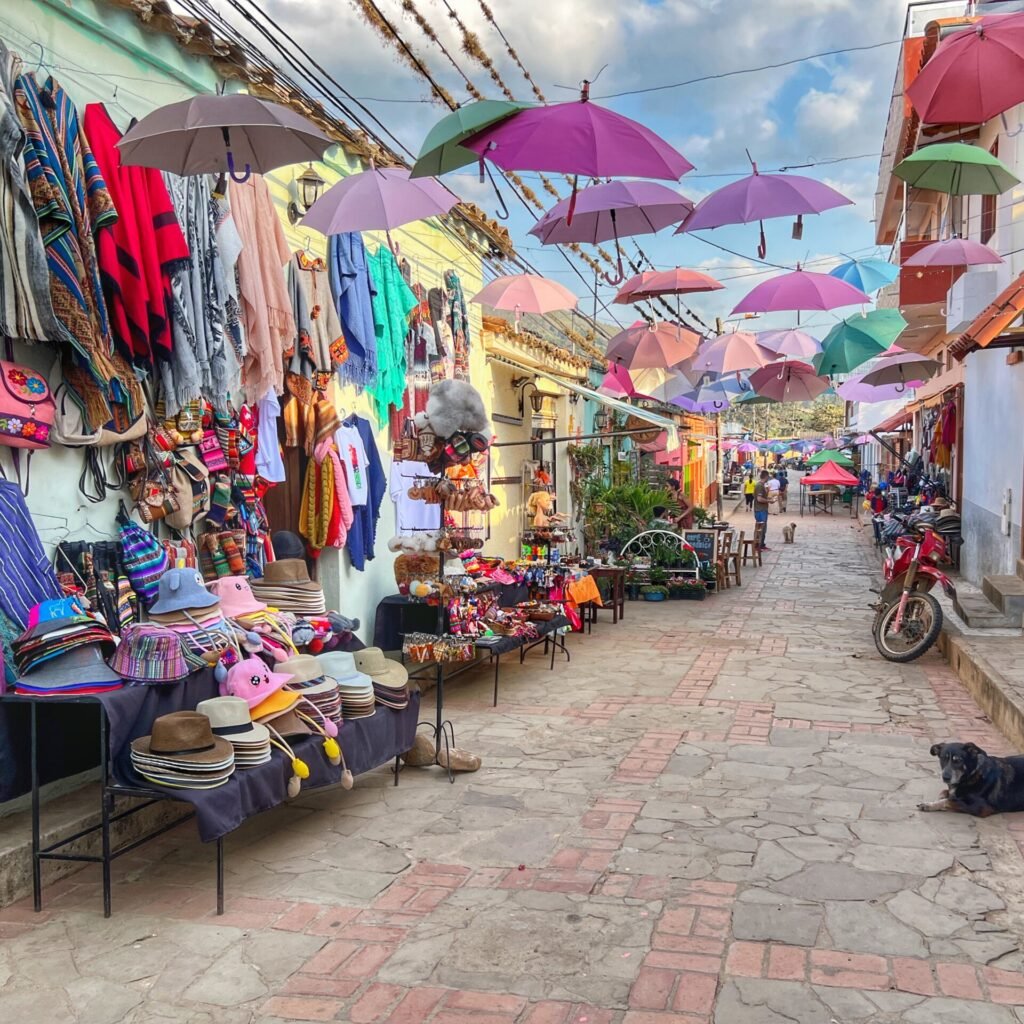

The pedestrian shopping street where it wouldn’t be Bolivia without some grilled street meat on sticks.
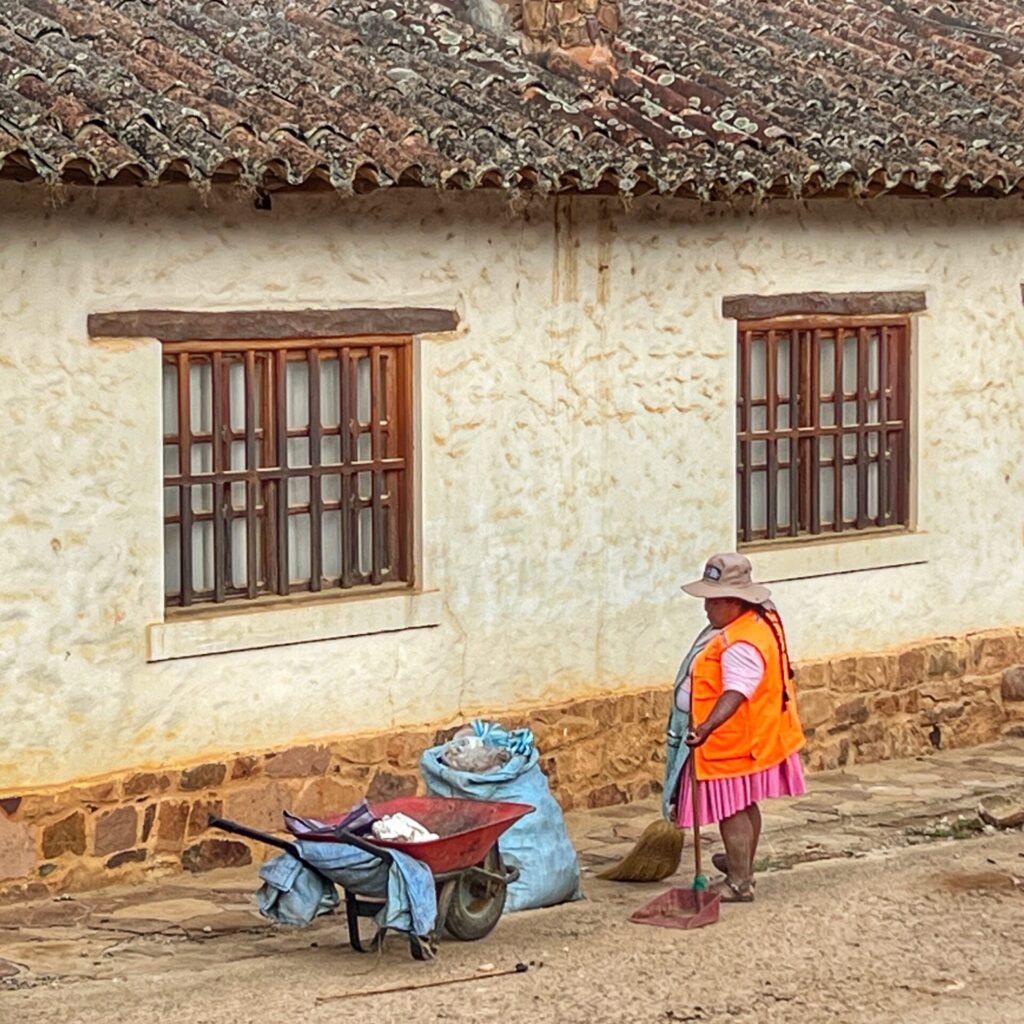
The Bolivians take pride in their environment and it’s very common to see morning street sweepers.
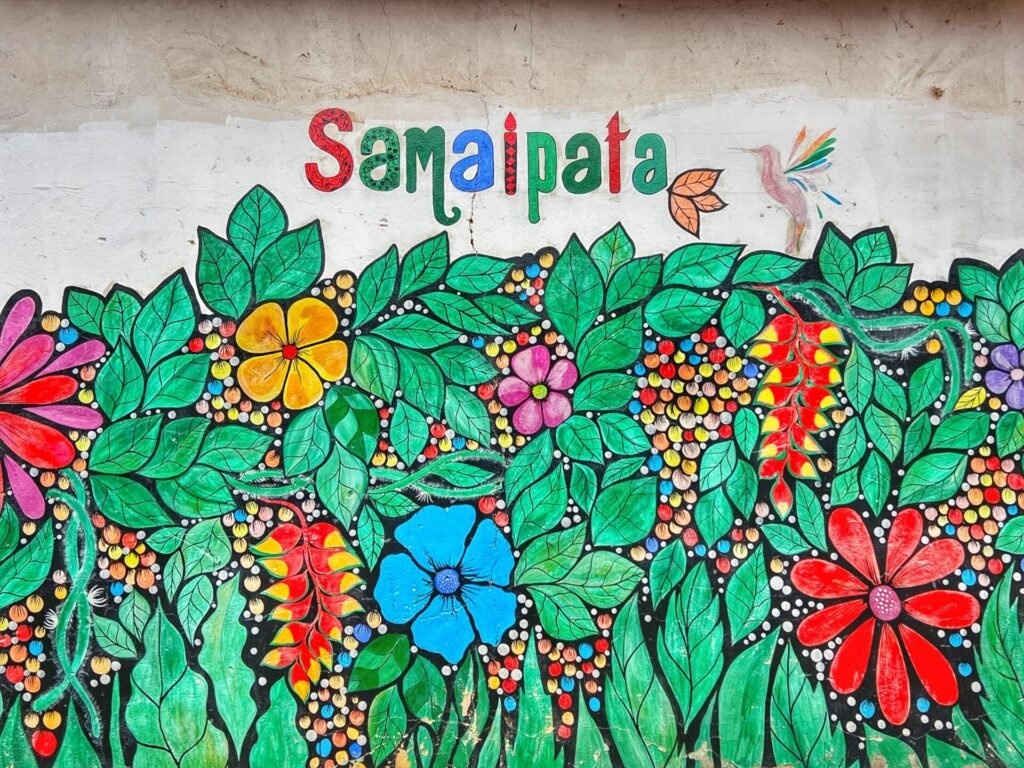
A mural just as colorful as the village is.

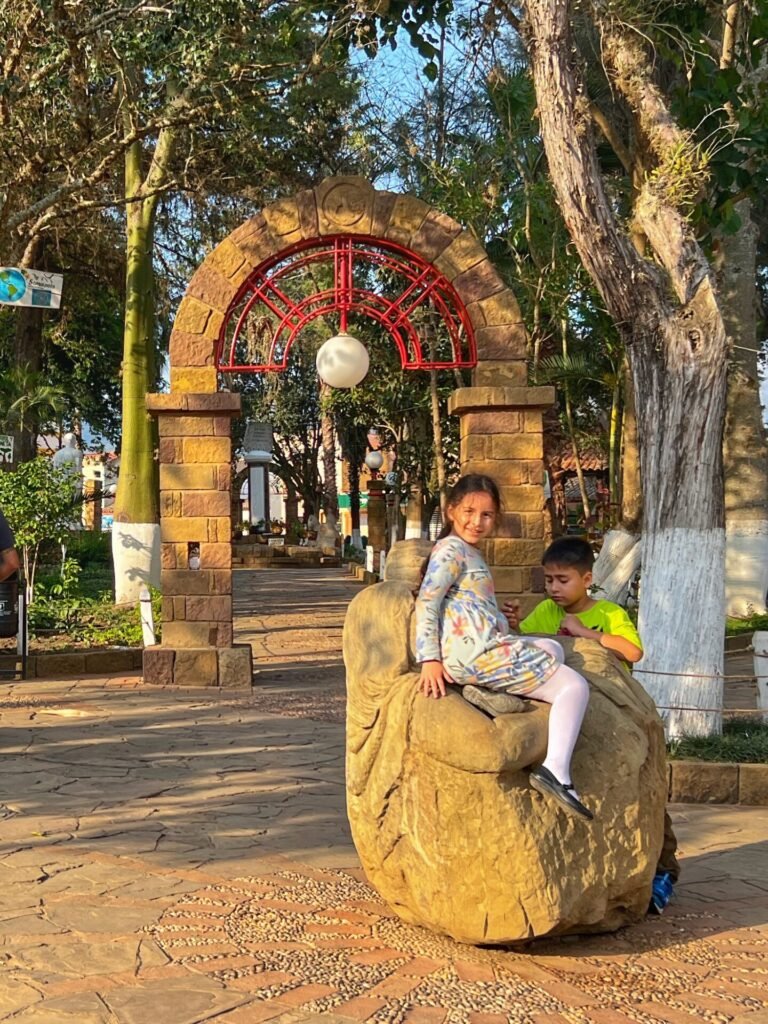
Setting up for a festival in the main plaza while kids played nearby in the main square.


As of 2018, the village was 400 years old. The moss draped the powerlines like seaweed everywhere. The first day we arrived, it was showcased brilliantly during golden hour.

The main square is lined with traveler friendly food options, including vegetarian/vegan.

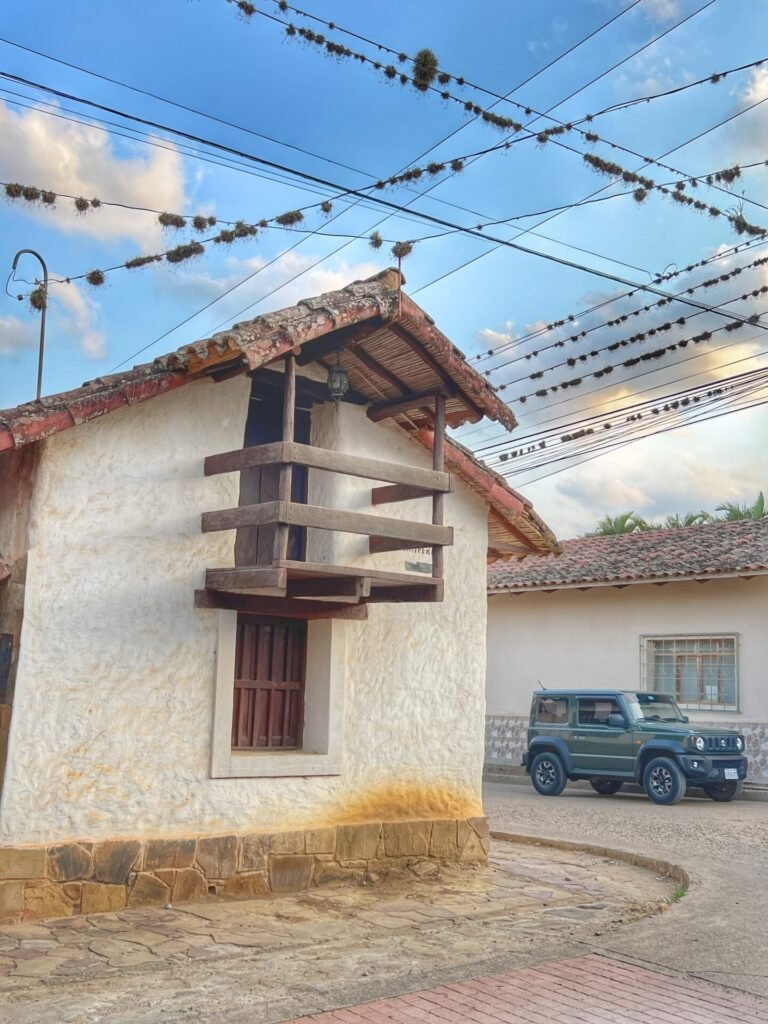
Homes of Samaipata. As in most developing countries, the electricity wires criss-crossed in every direction.
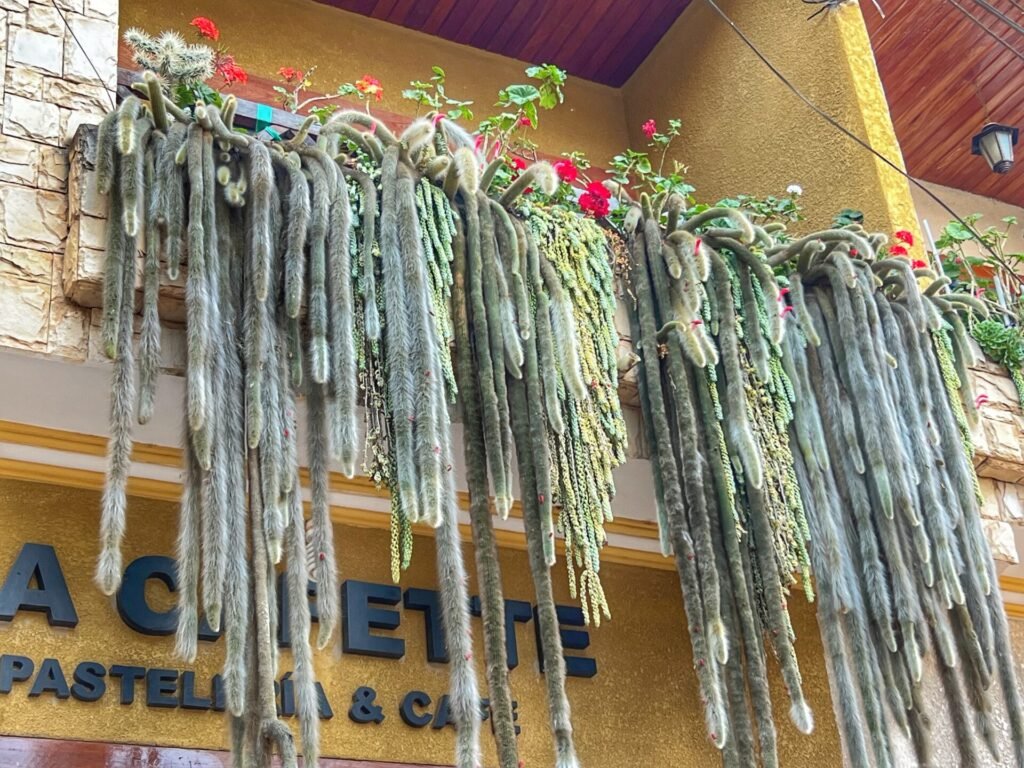
Cacti drip like monkey tails down the side of a restaurant. We’ve never seen anything like this.
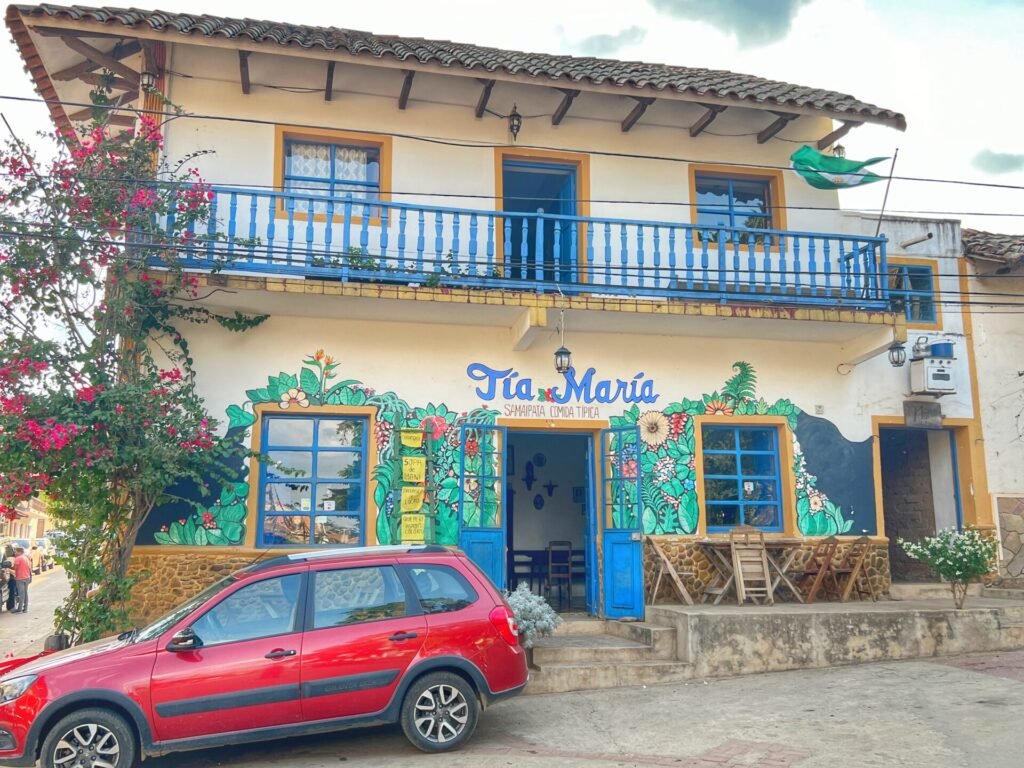
We ate at the adorable Tia Maria for our first meal which was traditional Bolivian fare at a higher price point.

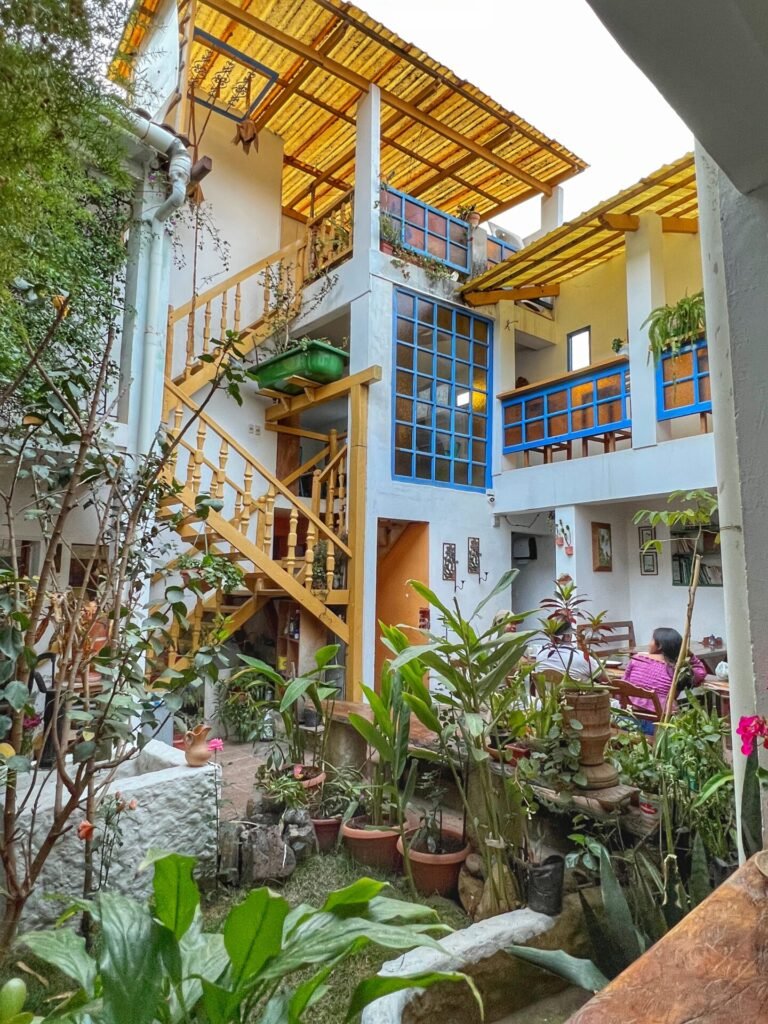
The tile floors and wood burning stove were lined with tradition as well as the inner courtyard.
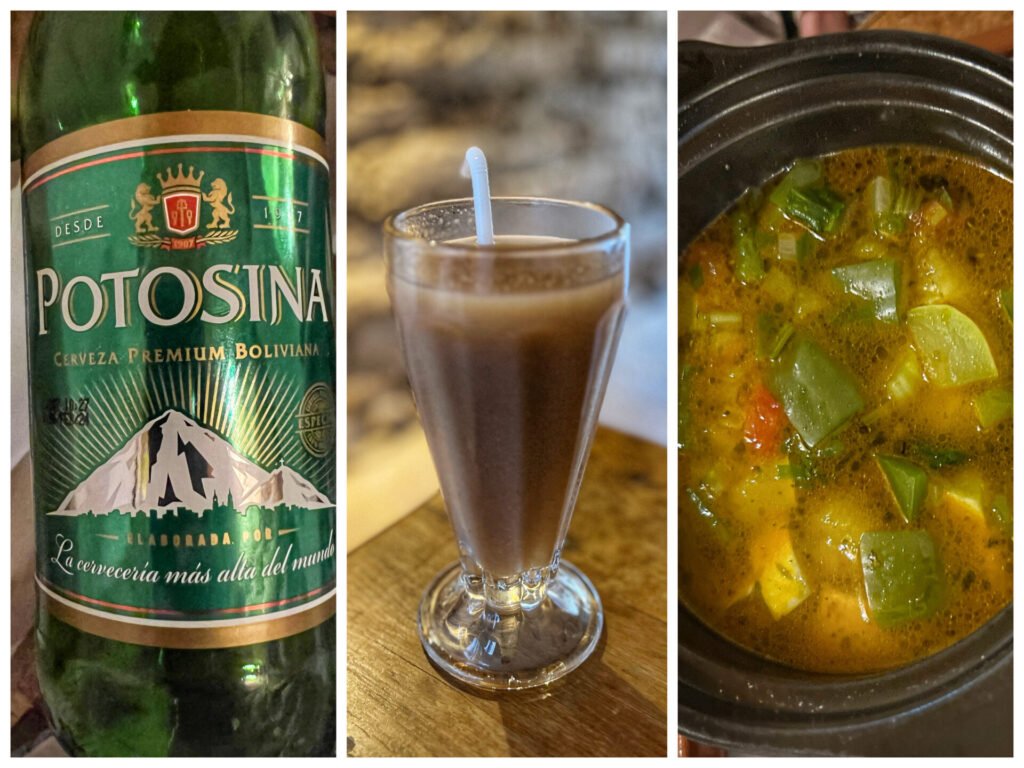
Greg grabbed a national beer called a Potosina, while Mandy had Chicha, which seemed to be the most refreshing drink we found in Bolivia. This typically cold and fermented (alcoholic) drink originated in the Inca empire and is made from fermented corn. It is traditionally made from chewed-up corn, saliva, (yes, that’s right!!) and a few spices which smell like cinnamon and nutmeg. Fortunately, they are not traditional enough to use spit in most places these days. 🤣 We actually liked the chicha more in Bolivia than Peru, or maybe it’s just growing on us. The third photo was Mandy’s dish, a perfectly seasoned vegetable soup.

Greg, on the other hand, had a picante chicken dish with a side of rice and what tasted like cheesy curdy yucca, but we’re honestly not sure what it was!

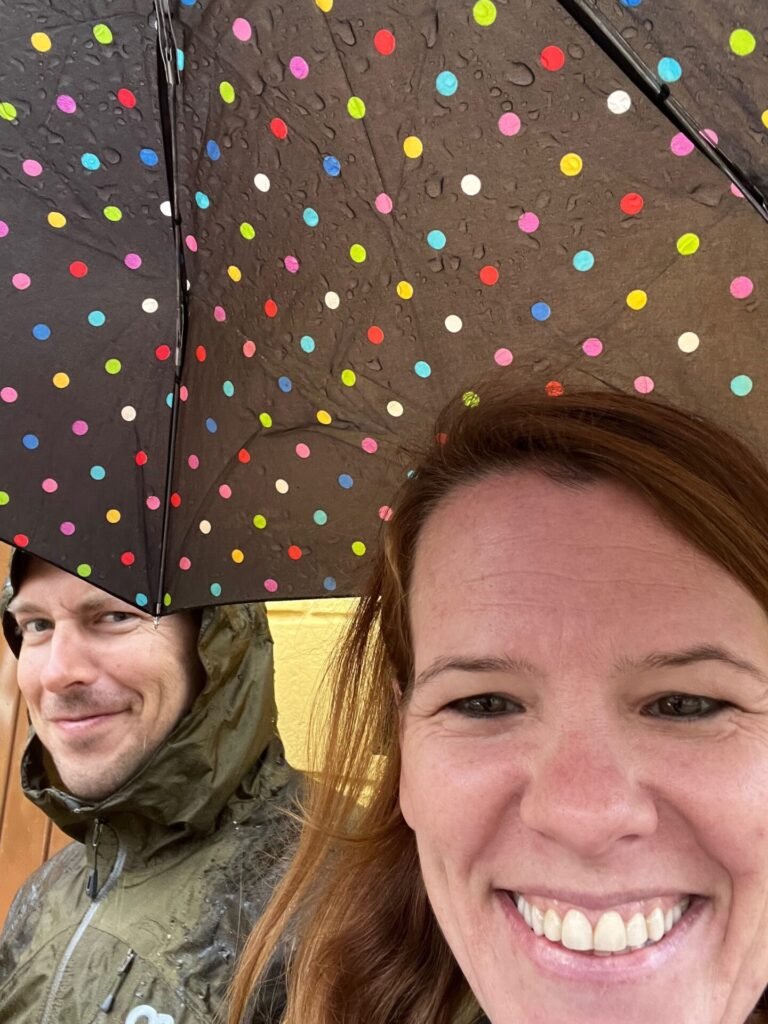
The next day, when we were supposed to go hiking, we were greeted with cobbled and dirt streets evolving into rivers and rain blowing sideways. So much for perfect weather. Mandy again reminds her dear husband the value of having an umbrella.
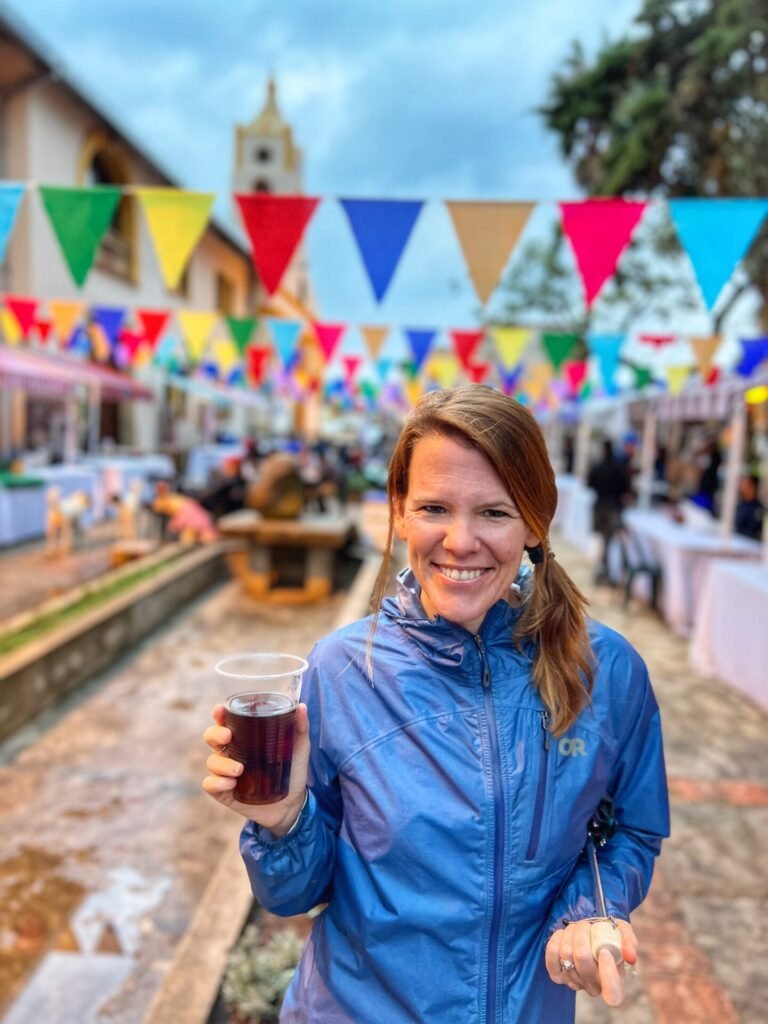
Later that night, it stopped enough so we could head down to the festival, although sadly most booths weren’t open and the music had been canceled. Still, we got to grab some interesting food and drink options. The first was Mocochinchi, a distinctly Bolivian beverage. It is made with peaches that have been peeled and dried. The fruits are then left in water overnight, then boiled with sugar and cinnamon. The drink is served cold, and often, after finishing the drink, the peach is eaten. It is SOOO delicious.

We then met the warm and smiling vendor selling an equally warm drink called Sucumbé. This warm wintertime cocktail combines milk, singani brandy, spices, eggs, cinnamon and cloves. It’s often compared to eggnog and was perfect for that drizzly and cool evening.
For dinner, we had empanadas, which again included veggie options. Ooo…the German influence is thick here! We like it! The guys who sold us the (delicious) empanadas were impressed we were “from” Vegas were fully expecting fame and fortune with this photo. 🤣
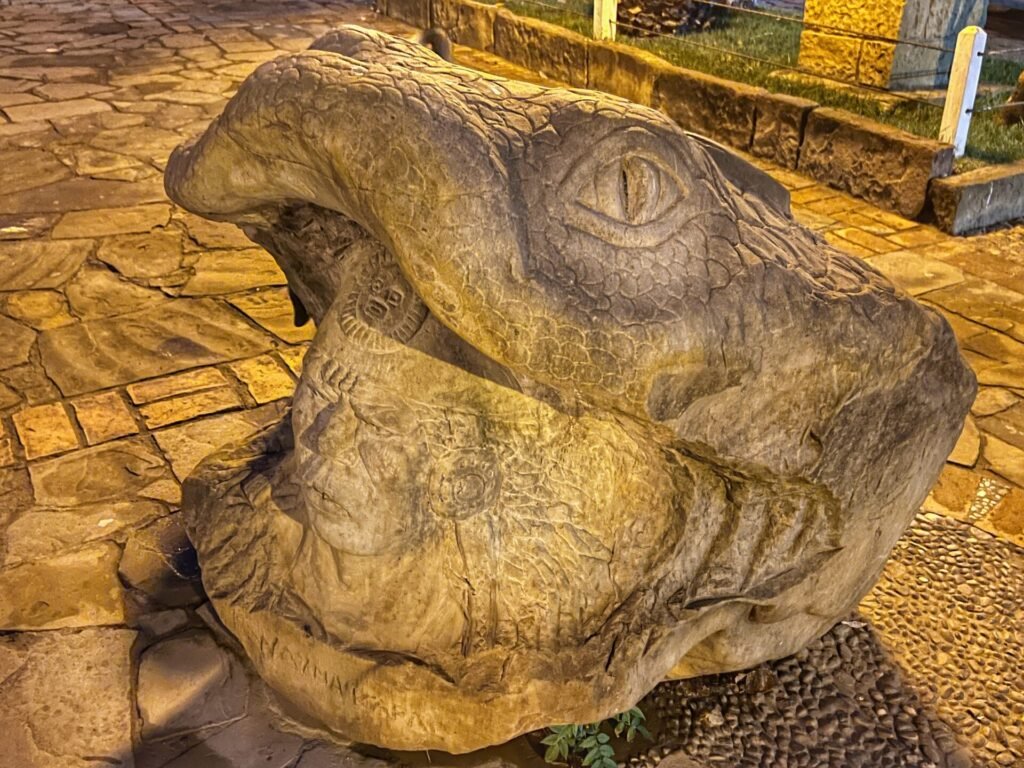
This depiction of a man’s face inside a serpent’s head was a bit creepy, but we never discovered the meaning.

If you know any Spanish, you’ll notice this emergency service vehicle, aka ambulance is free. Mic drop to the Estadounidenses!

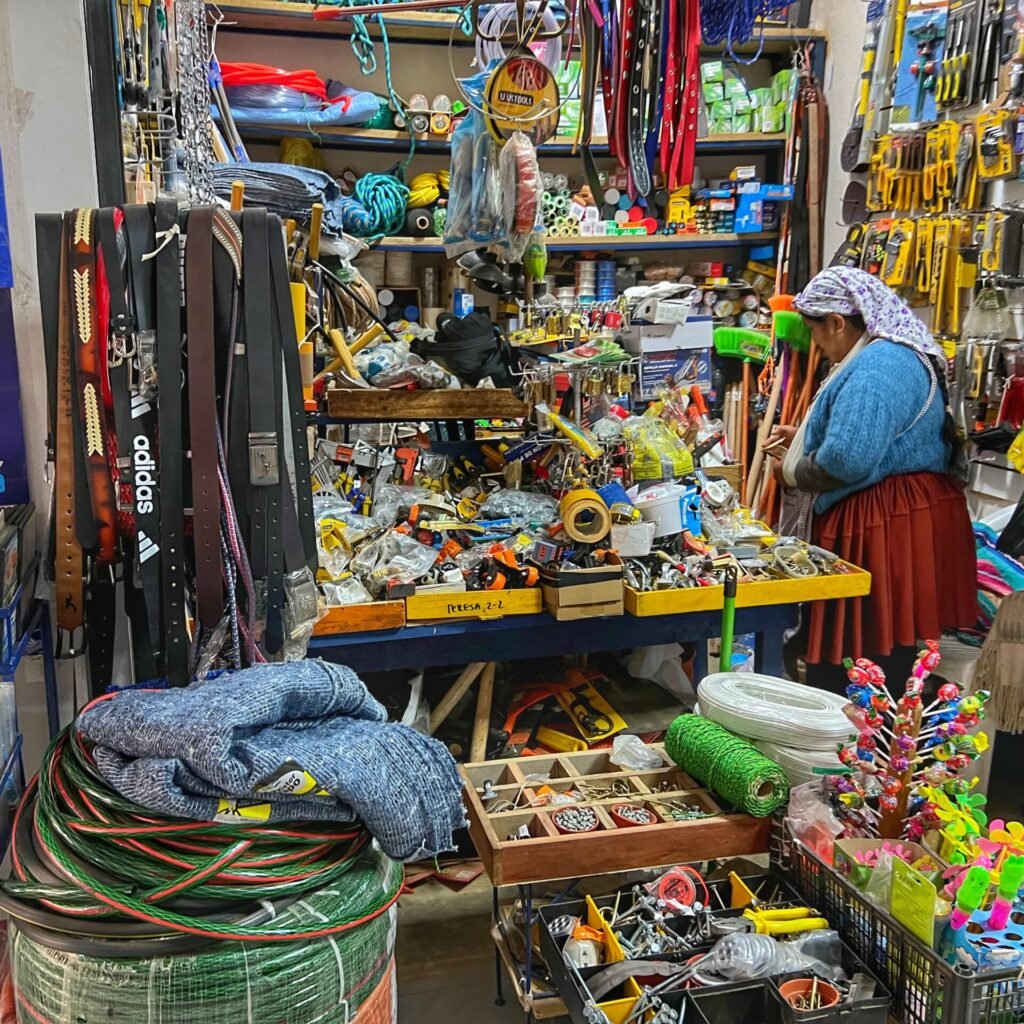
Heading to one of two markets, we stood two minutes looking at these sellers before they looked up from their devices. Kids are kids everywhere in this world. (Except they’re not because they’re spending their school days selling at mom’s fruit stand.)
Greg also had to buy a new belt from this shopkeeper for $5 because he left his expensive travel belt in Paraguay. This is the third thing we’ve left behind in a month. We can tell our fatigue is setting in because we rarely do this anymore.
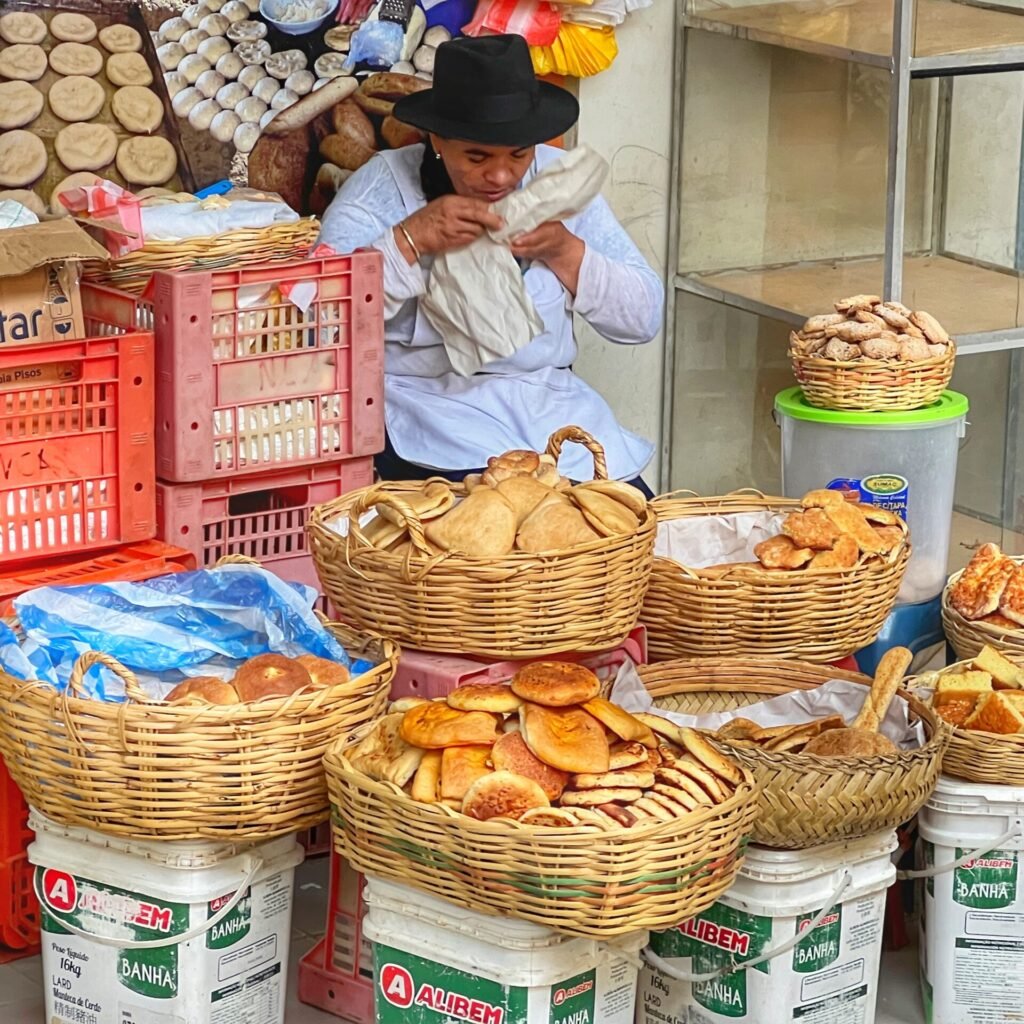


Looking for pan in the perfectly symmetrical stalls of the market. All traditional women either wear hats or braids, often both.
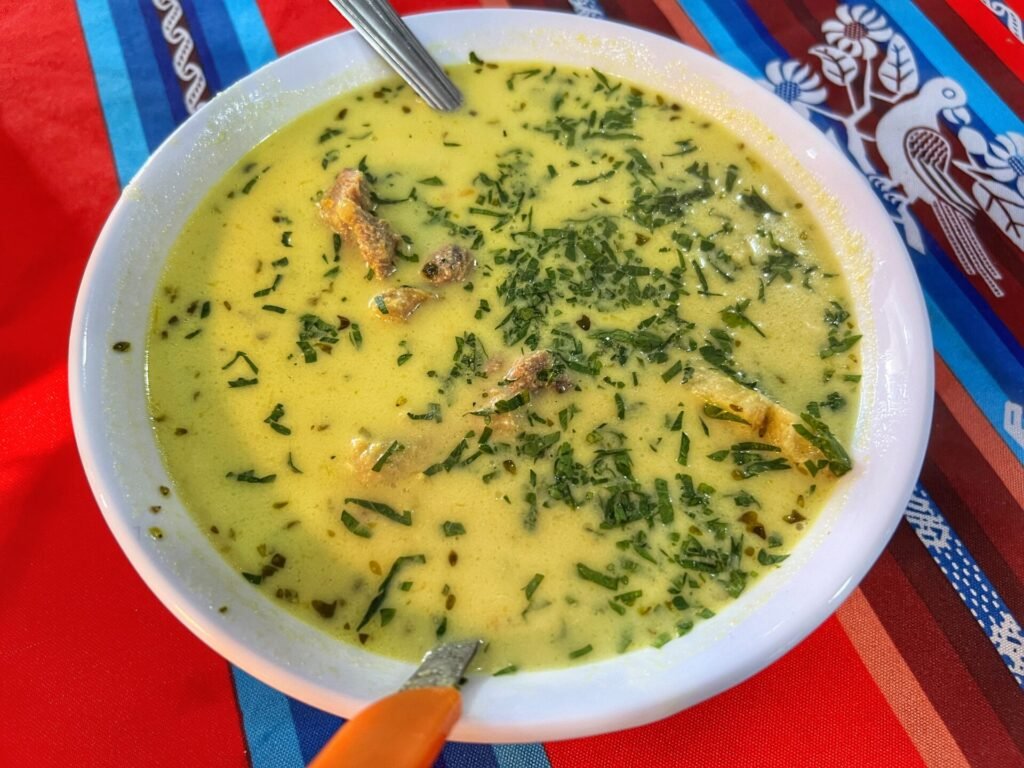
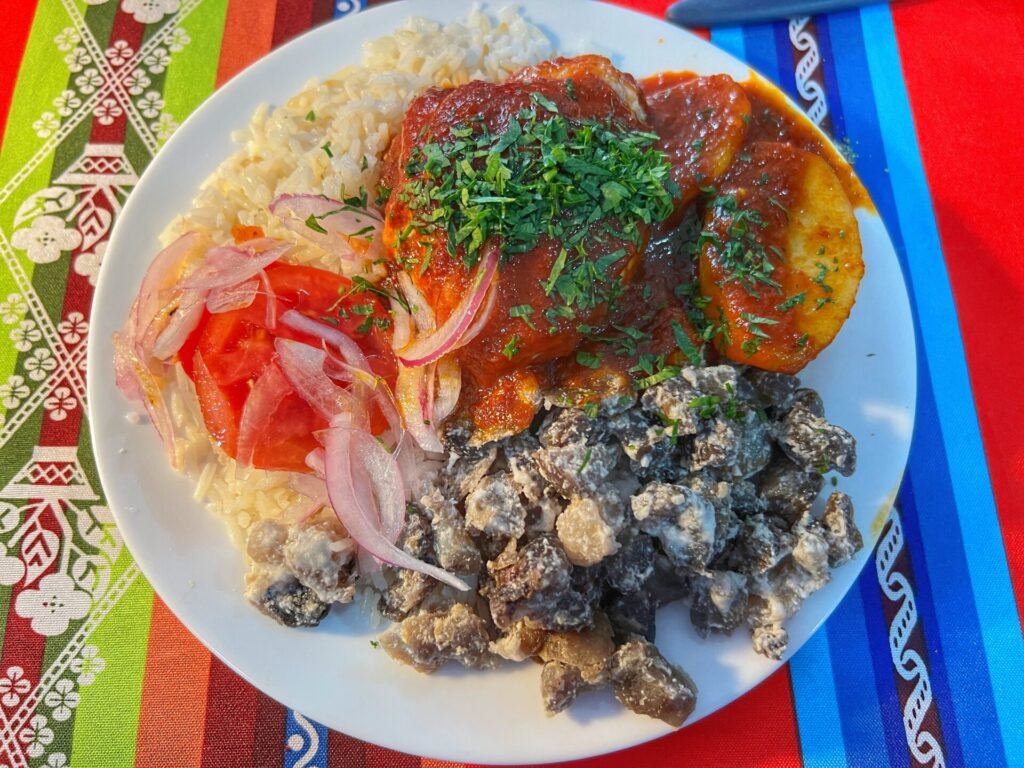
Grabbing a Menu del Dia at the market consisted of sopa de mani (peanut soup) and picante chicken for 25 bolivianos total or about $3.50. The food is pretty similar to Peruvian although not as good.
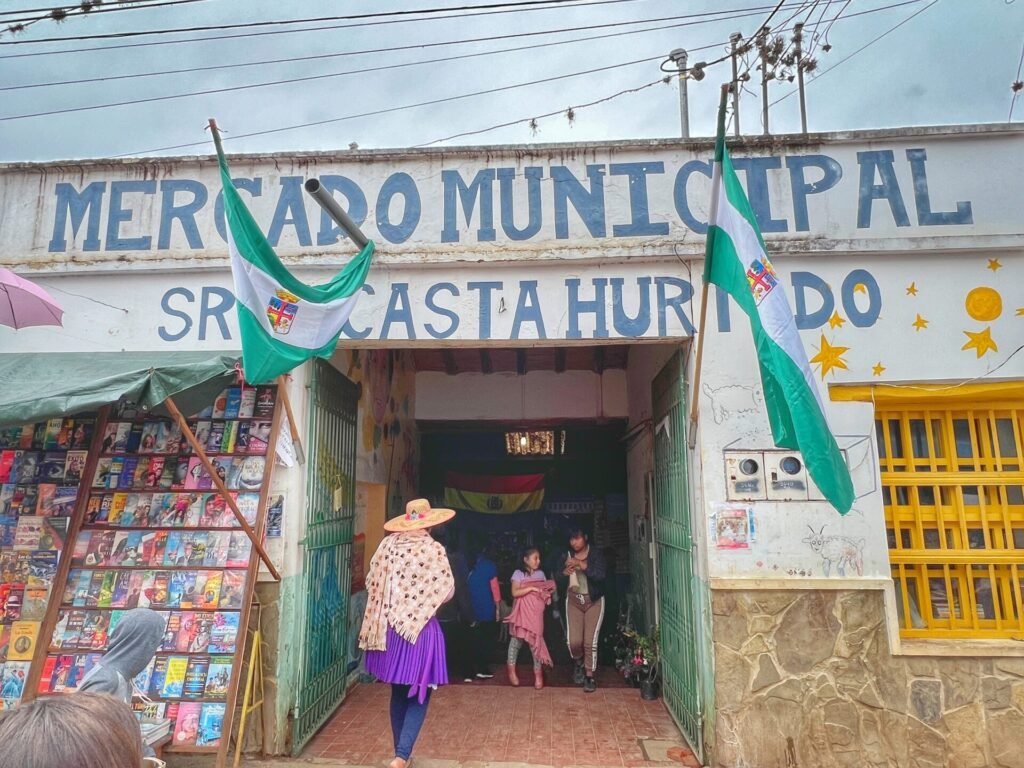
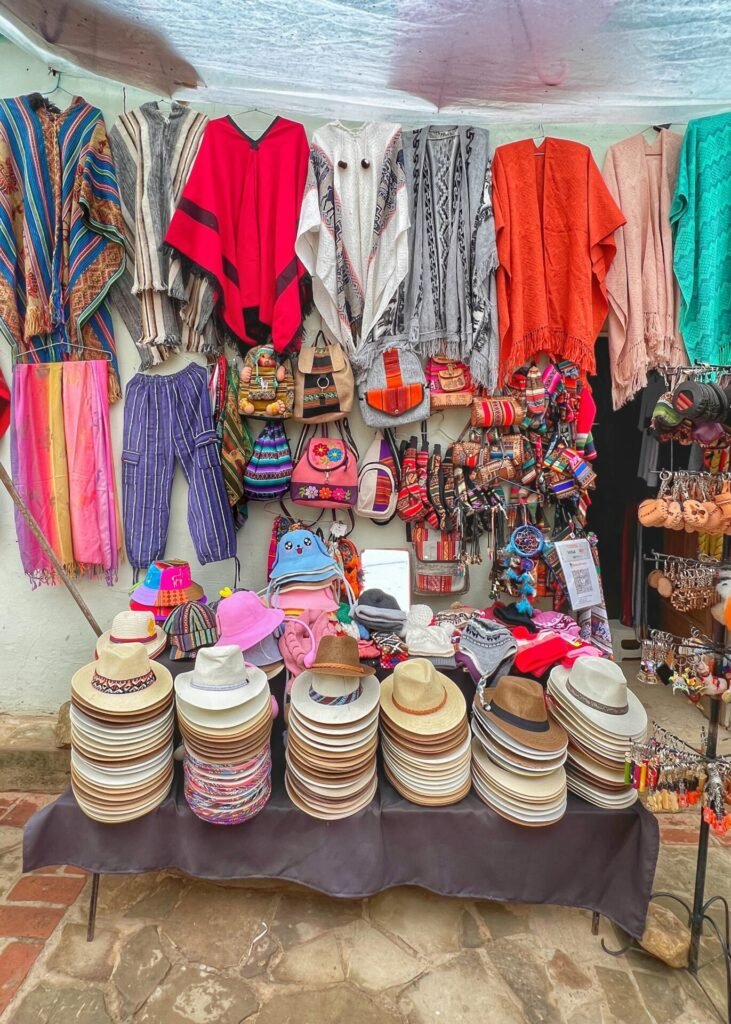
The other market, which was far more bustling than the first. The souvenirs and gifts are very similar to what we found in Peru.
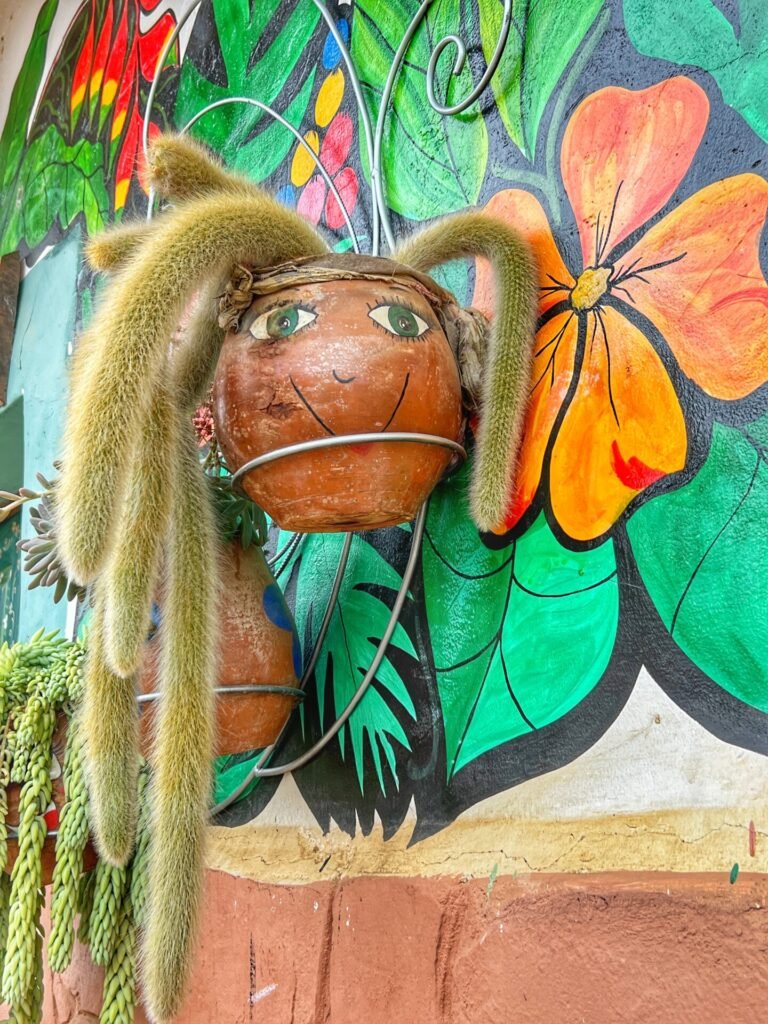

More adorable cactus hair on the beautiful streets of Samaipata

An adorable artisan food shop
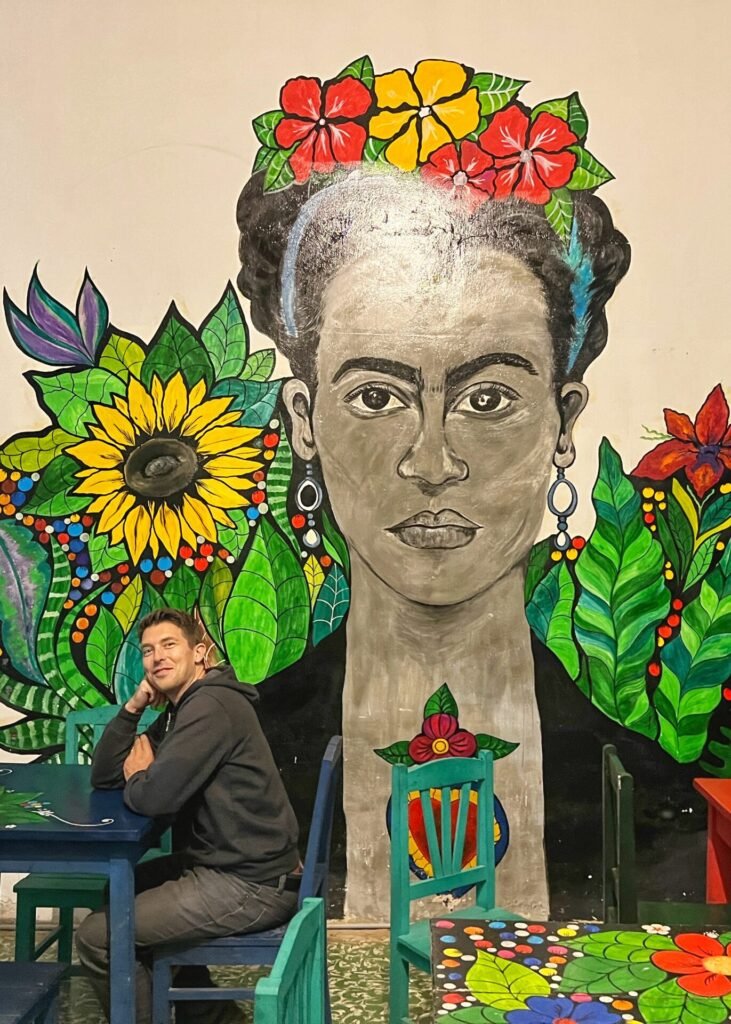

Other meals included a little taste of Mexico…aka, a giant Burrito at La Mexicana for $4 each.


And the best meal during our time in Samaipata…a vegetarian Menu del Dia from the La Chakana. It included a wonderfully savory Cream Corn Soup and a salad featuring brilliant red tomatoes, served alongside a spicy tofu and veggie stir-fry all for about $5. Samaipata definitely has some terrific food!!
El Fuerte UNESCO site

El Fuerte de Samaipata is a Pre-Columbian and UNESCO World Heritage archaeological site. This “melting pot” is unique because it encompasses architecture from four entirely different cultures: Chanè (800-1300 AD), Guaranis (1400-1450 AD), Inca (1400-1450 AD) and Spanish. (1450+) It has served as a ritual and ceremonial center, a resting site for warriors, a fortress and residences. During Inca times, it was also determined to be a trading center linking the most important areas of south America: The Amazon, the plains of Chaco and the Andean region. (Wikipedia) Its construction was probably begun by the Chané, a pre-Inca people of Arawak origin. The rock itself represents older civilizations while the ruins in the fire foreground represent Spanish development.
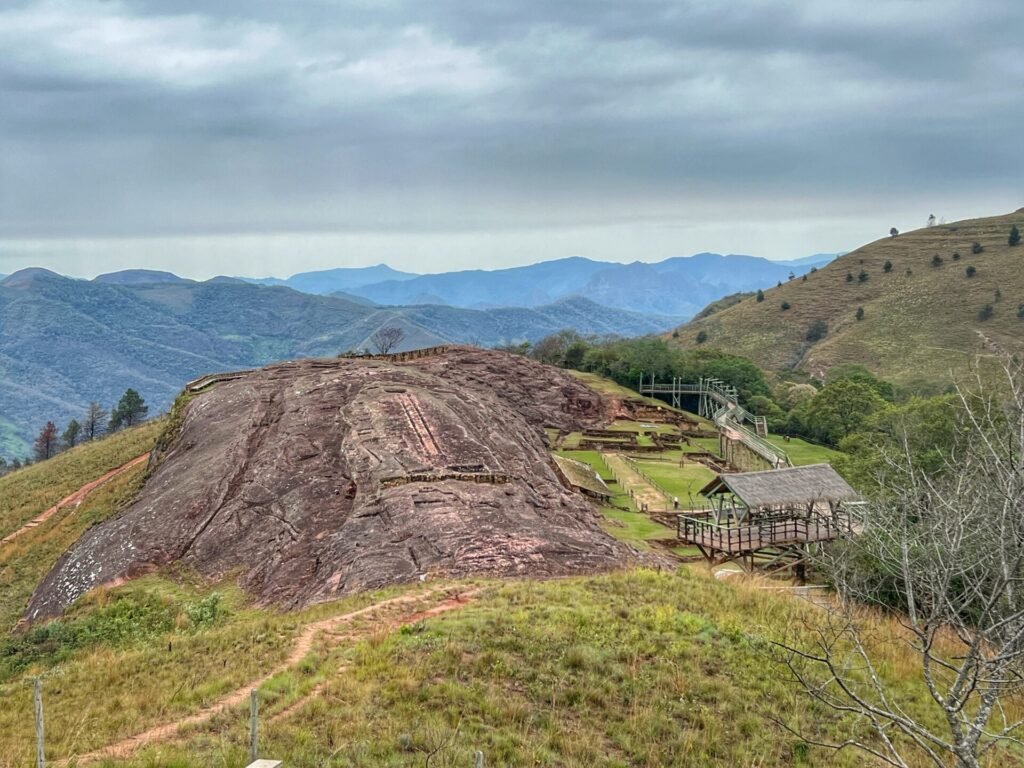
The Samaipata archaeological site of about 49 acres is divided into two parts: a ceremonial sector and an administrative/residential sector. Funny, where are the computers, copy machines and filing cabinets?! Some of the construction of the Inca were built on earlier structures of the Chané.
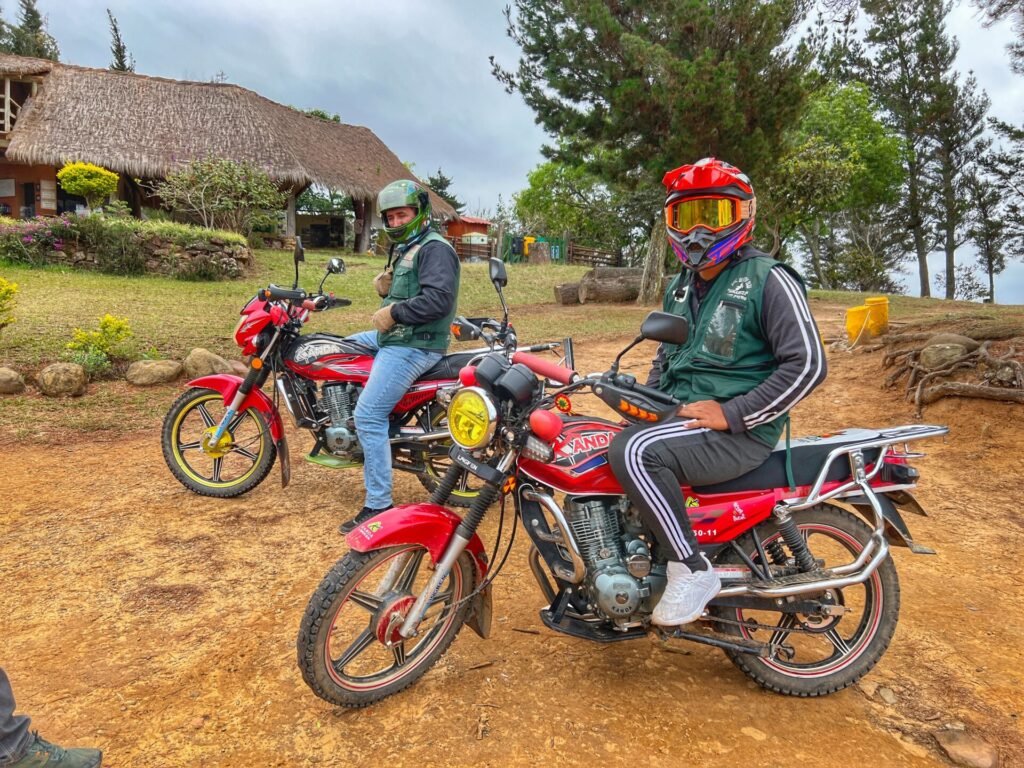
To get to El Fuerte, we took two motor taxis to the site from Samaipata. To find the taxis, go to the end of the umbrella pedestrian street opposite the square and take a left. They will be down about two blocks on the right and cost 20 Bolivanos each or about $2.90 for the 20 minute ride up to the ruins. We then opted to walk back, but you can also have them wait for you. Upon arrival, you pay your hefty admission fee (50 Bolivanos each ($7.23) which also includes admission to the museum in Samaipata.
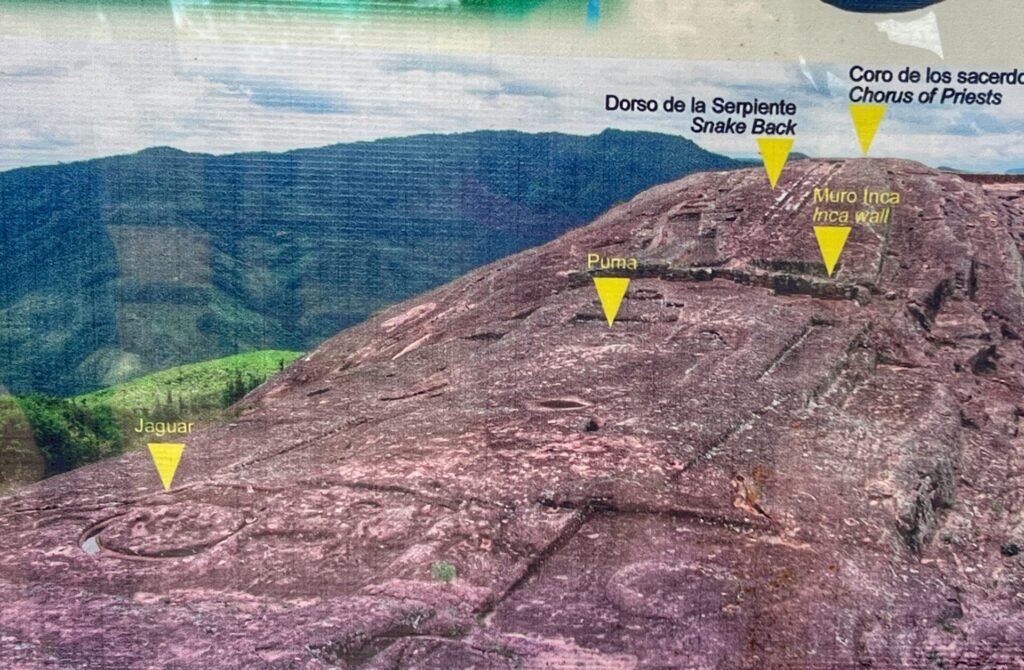
Here is a map of the things supposedly carved into the rock. It’s possible to see first two circles that represent felines. also an Incan wall and the channels called “The snake back ” There are other contiguous zones like the guard house placed in this hill and the circles formed by the terraces in the next mountain.
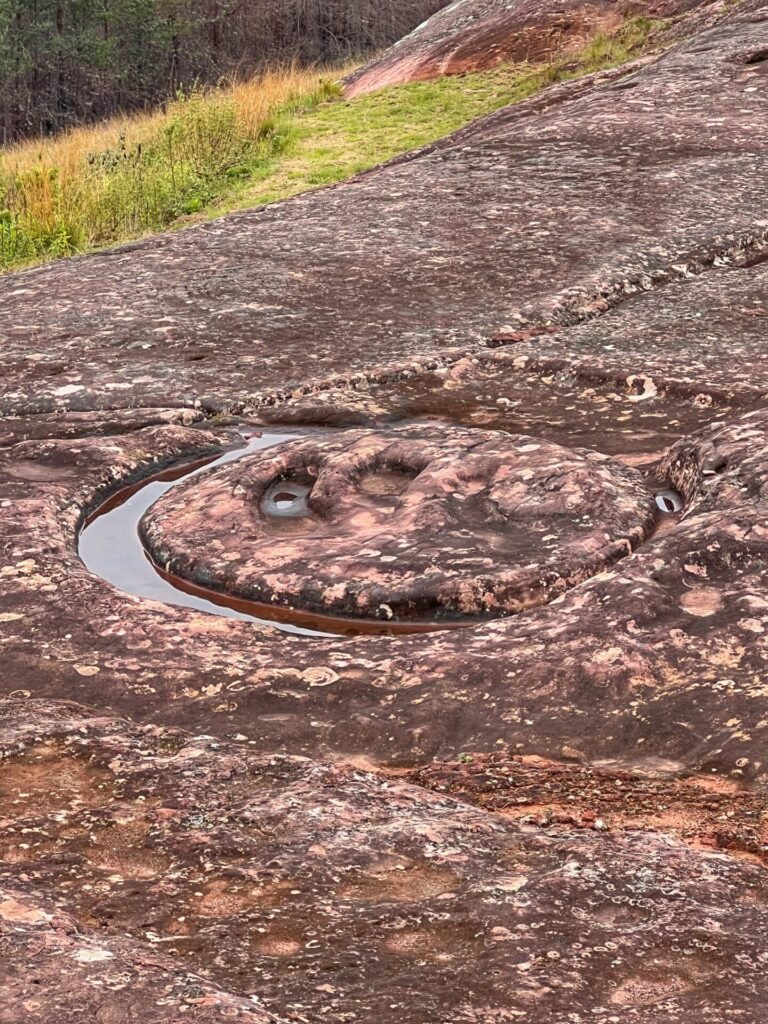
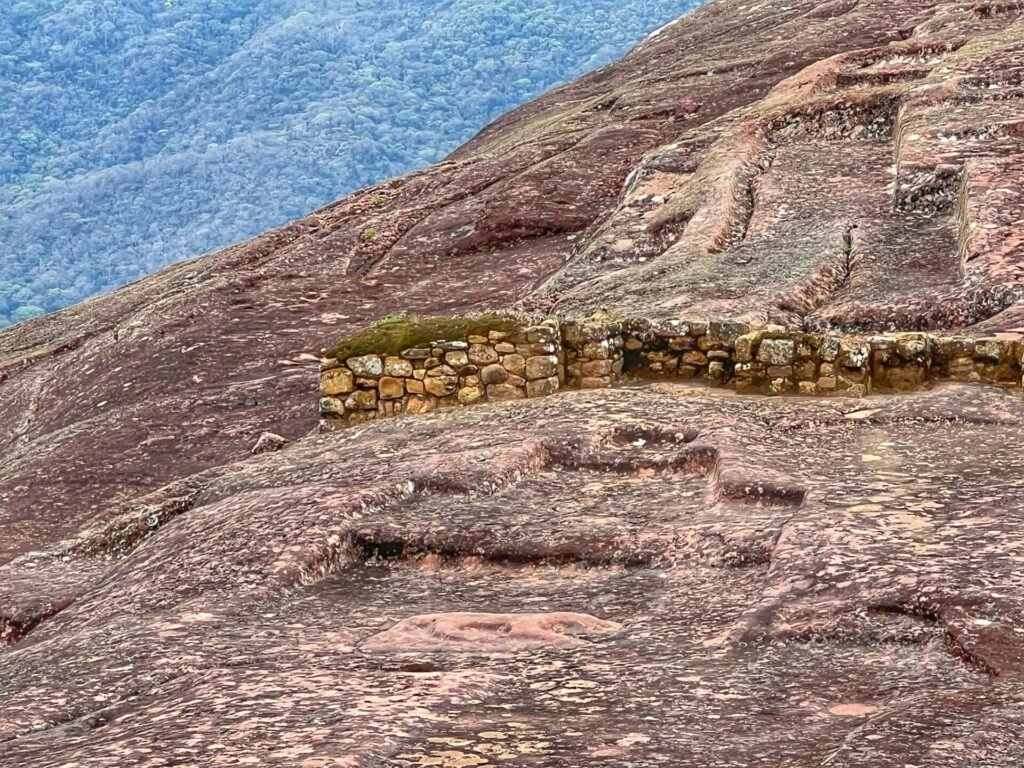

Unfortunately you couldn’t get close enough to really inspect them. This is supposedly the first cat. Hmmm. Ok? The second cat was inside some sort of structure and a bit easier to see.
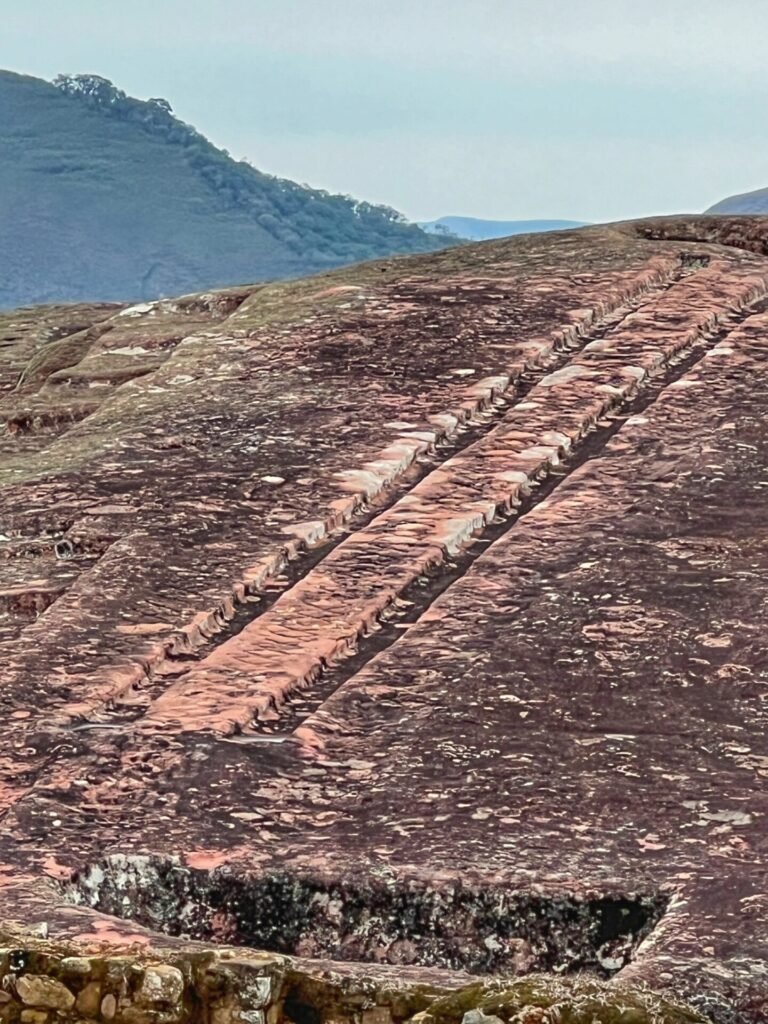
Behind the wall are well marked two parallel channels. On its sides are fine incisions in a double zigzag, forming continuous diamond. The original function of these carvings was apparently ritual, as they have the appearance of a live snake while the water flows through them. For this reason the set is named “The Snake Back”

This section is called Temple of the Sacristes, which were used by Incan priests who officiated the spiritual services in the temple and present niches where the mummies and idols were placed.

Las Cinco Hornacinas were probably used to put the mummies or god’s statues in.

The Casa Española was of course developed much later. It was a typical andaluz-arabe house, probably two stories. It was a fortress for the Spanish against the Guaranis and is probably here where the tradition and name of “El Fuerte” evolved.

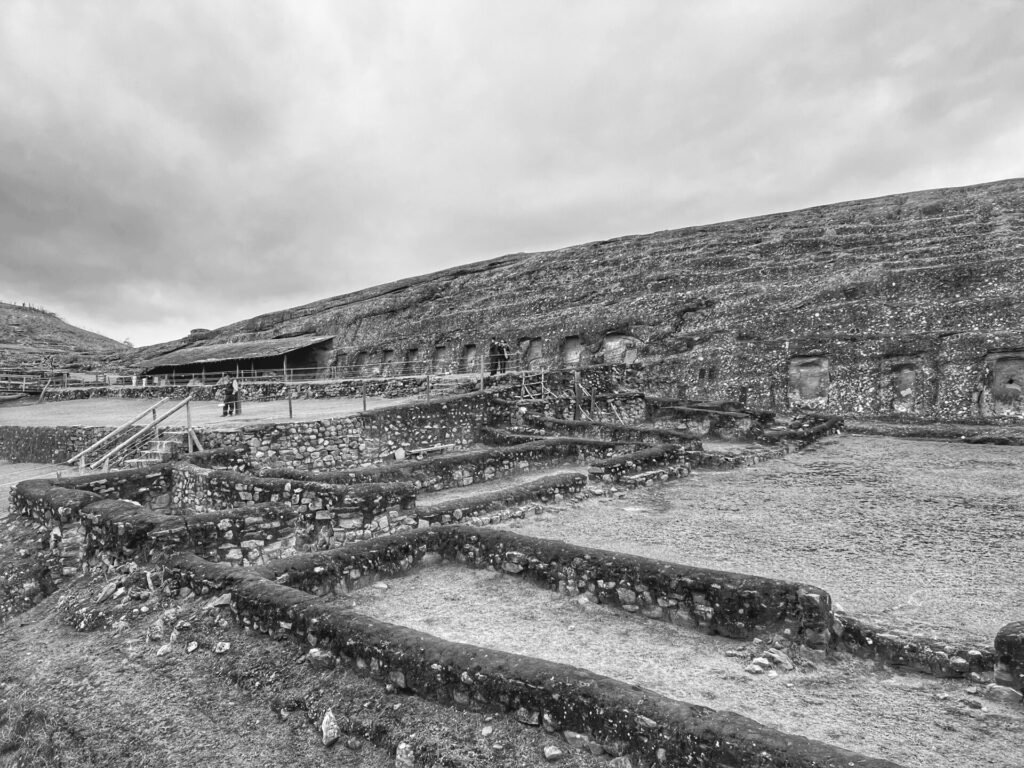
Under these constructions were found the rests of Incan houses and from others cutures that arrived to the Sacred Rock. As usual, the Spaniards plopped a squat where they pleased.
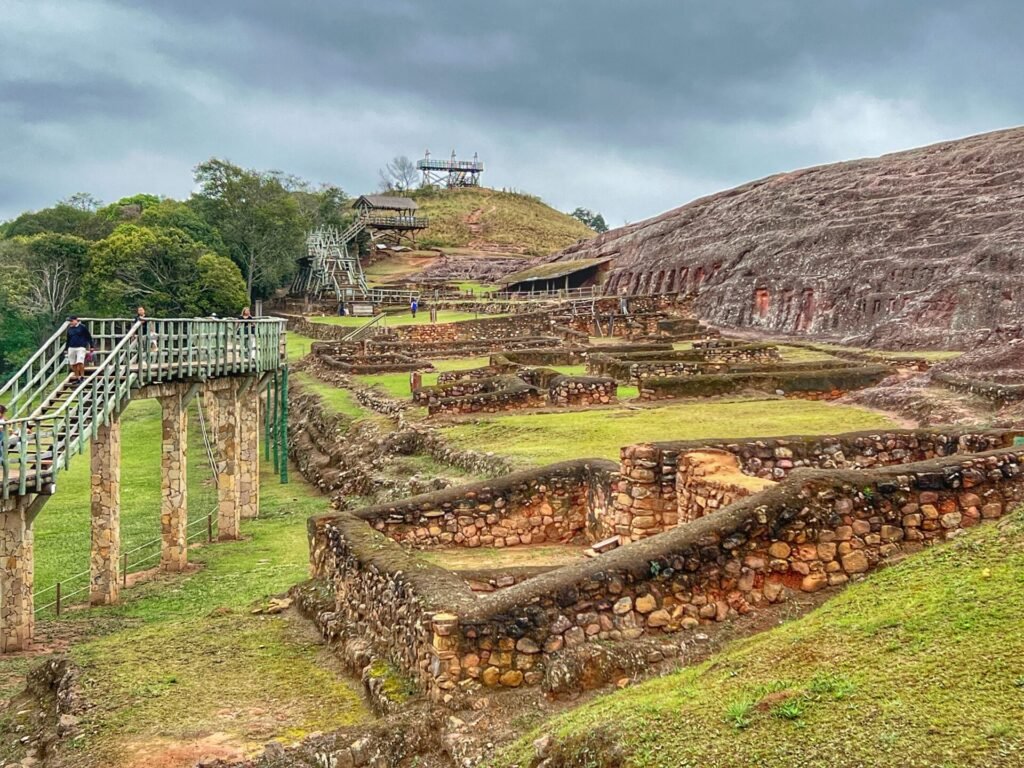
At one point, tourists were able to climb on the rock, but this has been ended due to preservation purposes.

More mummy holders on the south side.
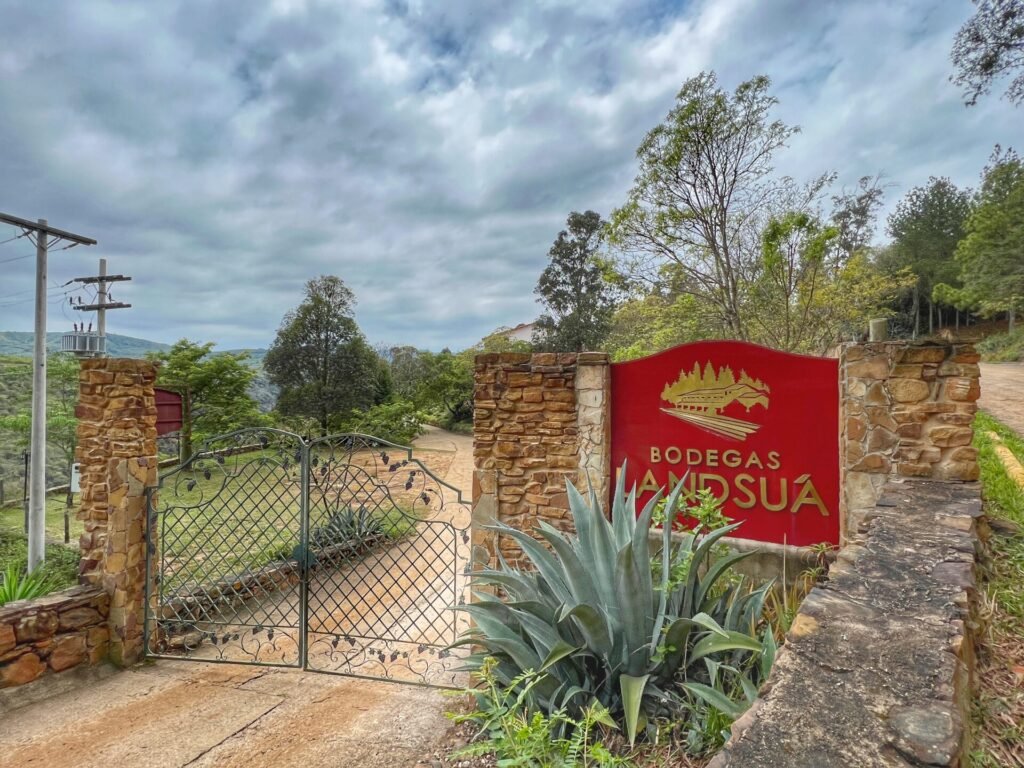

Walking down, we passed the sadly unopened winery. The walk was fairly pleasant along the road and then connected to a trail and was about 3 hours in length. It was almost all downhill!

Our picnic lunch included a Siamese banana!!! Have you ever seen one of those? If looking in the US, the answer is obviously no because god forbid we have imperfect fruit. 🤣

Afterwards we checked out the accompanying museum back in town.

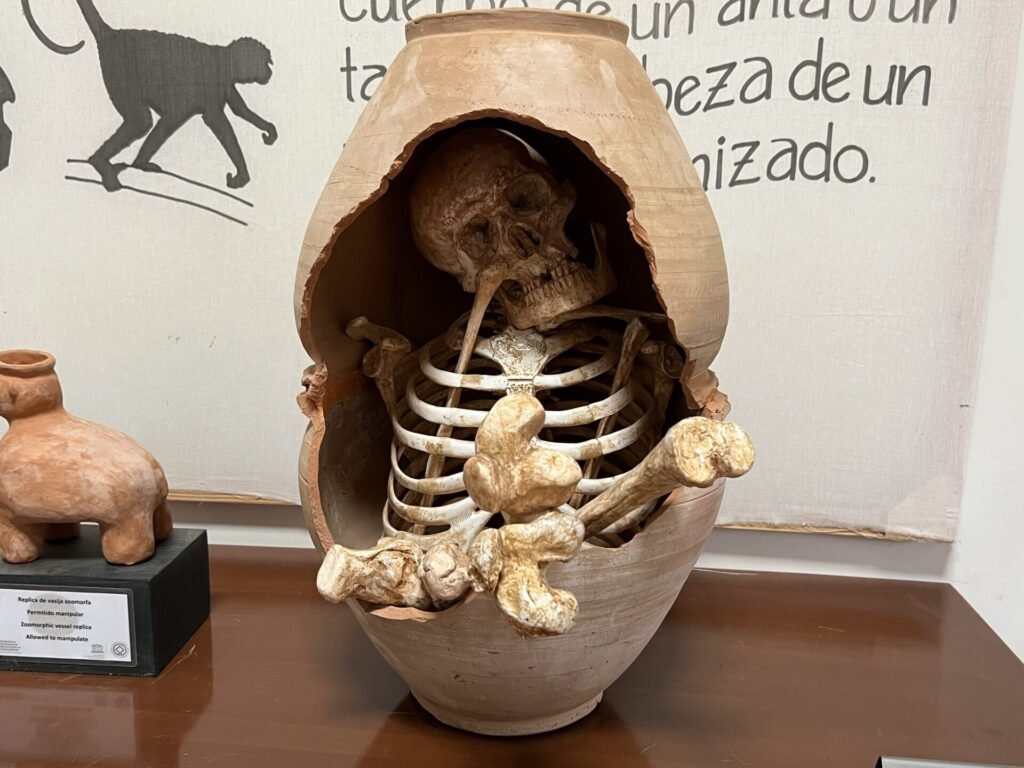
We learned that when the pre-Colombian cultures weren’t creating rock cats, they were smashing skulls. Indeed…Artificial cranial deformation, head flattening or head bandage is a form of body modification in which the skull is intentionally deformed. This is achieved by distorting the normal growth of a child’s skull through the application of force. Lovely. They also stuffed their corpses in urns and bury them. Cozy.
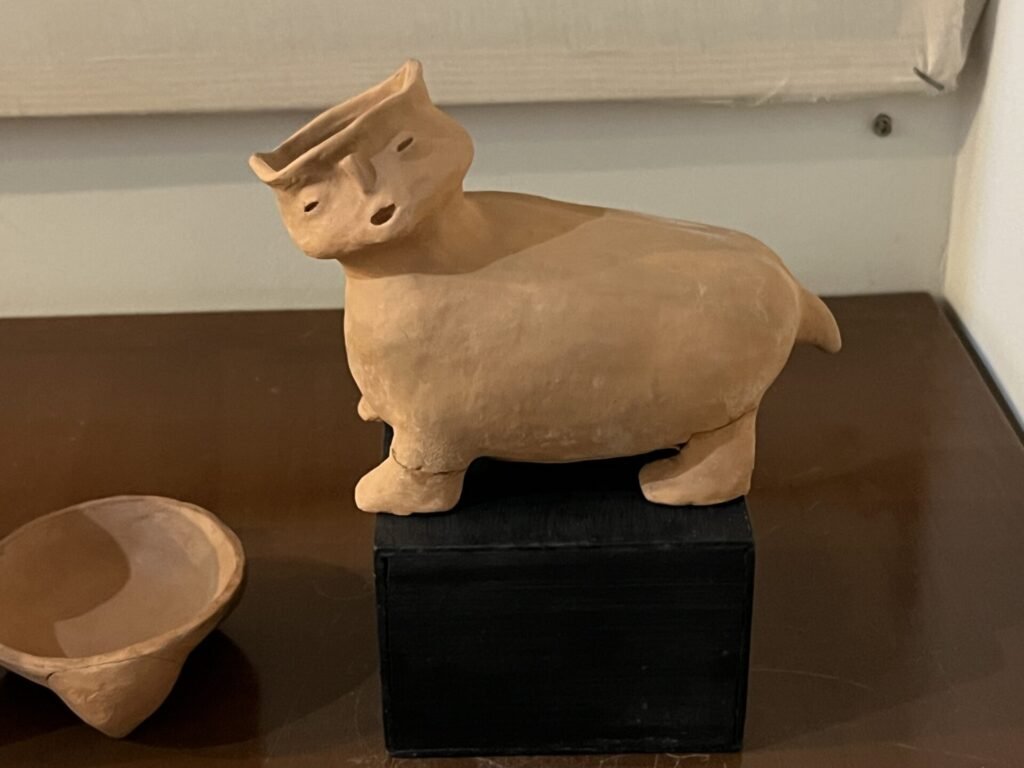
The cutie Man Bear is linked to Andean cultures, the Peruvian coast, the inter-Andean valleys and part of the Chaco. the region where inhabit the spectacled bear. The legend is that a divine being dwells in the mountains and has the chance of becoming a man and a bear. It’s a ridiculous drawn-out story. Even Disney couldn’t write this crap. 🤣

